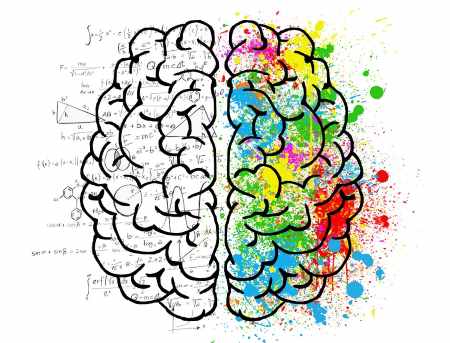Every day our thoughts and emotions are affected by neurons in our brains. The neurons communicate with each other and as a result, produce brainwaves which are measured in Hertz.
Our brainwaves change depending on what we are doing and feeling. You will have slower brainwaves when you are tired and dreamy, while higher frequencies will be dominant when you are alert and concentrated.
If a certain brainwave is produced too much or too little, it can change the balance in our bodies and cause negative effects like insomnia, stress or anxiety. Every brainwave has its purpose and the dominant one will depend on the situation you are in.
The Five Types of Brainwaves
Brainwaves are grouped into 5 categories based on their frequencies, and each of them is associated with specific mental states.
Delta Waves
Frequencies: 0.5-3 Hz
Optimal level: Better sleep, improved immune system
Delta waves are associated with deep sleep an relaxation. They are the slowest of the 5 brainwave types and are more often found in children during the aging process.
Healthy levels of delta waves contribute to better sleep and improved immune system. Too high or low levels of delta waves are connected to learning difficulties, poor sleep, ADHD and brain injuries.
Theta Waves
Frequencies: 3-8 Hz
Optimal level: improve creativity and intuition, boost your mood
Theta waves are associated with sleep, deep meditation, and dreaming. They are also linked to autopilot mode when you are doing something you have done a thousand times before.
A normal amount of theta brainwaves can help you improve your creativity, intuition and boost your mood in general. Too high or low levels of theta waves are linked to ADHD, depression, anxiety, and stress.
Alpha Waves
Frequencies: 8-12 Hz
Optimal level: relaxed body and mind
Alpha waves are the “bridge” between our subconscious (delta and theta) and conscious (beta and gamma) brainwaves. They are dominant during relaxation
Alpha brainwaves are dominant when you are relaxed, for example, when reading a book or meditating. Too high or low levels of alpha waves are connected to OCD, inability to focus, anxiety and stress.
Beta Waves
Frequencies: 12-38 Hz
Optimal level: good focus, memory recall, problem-solving ability
Beta waves are active when you are concentrating on tasks like reading, learning or talking with others. They can drain our energy quickly and reduce emotional awareness and creativity.
Optimal levels of beta waves will make sure you have a good focus, problem-solving ability, and memory recall. Too high or low levels of beta waves can lead to depression, anxiety, poor cognitive ability, and stress.
Gamma Waves
Frequencies: >38 Hz
Optimal level: information processing, memory storage, high focus
Gamma waves are associated with peak focus and expanded consciousness. They are generated when you are learning new information and concentrating a lot. Gamma waves also bind our sensed to process new information.
Optimal levels of these waves are responsible for information processing, learning and storing memories. Too high or low levels can cause ADHD, learning problems and anxiety.
Changing Your Brainwaves
 Now that you know more about your brainwaves, you can use this information to alter your brainwaves. One of the ways to normalize your brainwaves is meditation. Regular meditation can reduce beta brainwave activity, which is a common problem in western society.
Now that you know more about your brainwaves, you can use this information to alter your brainwaves. One of the ways to normalize your brainwaves is meditation. Regular meditation can reduce beta brainwave activity, which is a common problem in western society.
If you would like to boost a particular brainwave, for example, increase your focus while studying, you can try binaural beats. They are sounds in specific frequencies that promote specific brainwave states. The easiest way to find them is by simply searching them on YouTube.
If you would like to learn a lot more about your brainwaves and how to use them to improve your life, I can suggest reading Brain Wave Vibration: Getting Back into the Rhythm of a Happy, Healthy Life. It will help you to understand your body and thoughts better.